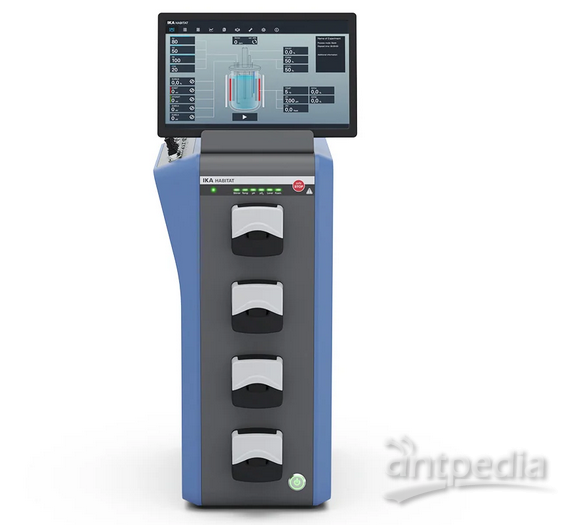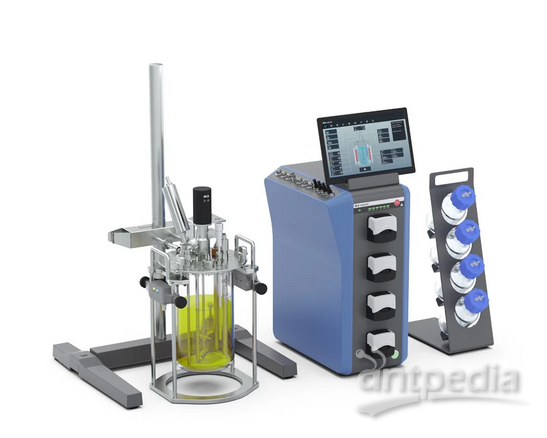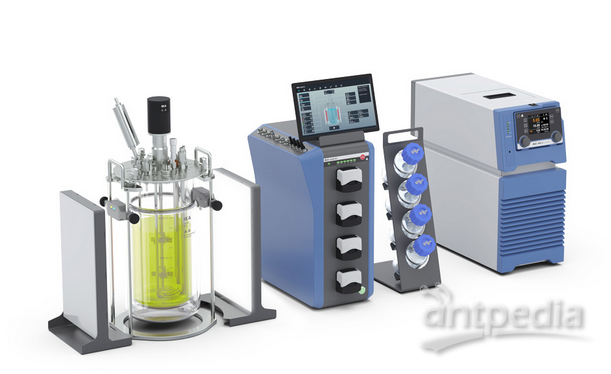Phospholipase C d1 in phospholipid associated cell signaling

Phospholipase C (PLC) d1 is a member of the PLC family that produces two second messengers, diacylglycerol (DAG) and inositol 1,4,5-triphosphate (IP3) by hydrolyzing the membrane lipid phosphatidylinositol 4,5-bisphosphate (PIP2). DAG in combination with Ca++ is necessary for further activation of Protein Kinase C, while IP3 diffuses into the cytoplasm and mediates the release of intracellular calcium. PLC d1 has a pleckstrin homology (PH) domain that binds to PIP2 in the membrane with an affinity of 1.7 mM. It has selectivity for PIP2 over other phosphatidylinositol lipids and provides a specific probe for activation of PIP2 metabolism to DG and IP3. Activation of PLC d1 results in its translocation from the membrane to the cytoplasm. PLC d1 activity is feedback-inhibited by IP3, which has a 8-fold higher affinity for PLC d1 than does PIP2. The members of the PLC family play a key role in the signal transduction cascade for many receptors. At basal Ca++ levels PLC d1 has been shown to be activated by the adrenoreceptor a1B, adrenoreceptor a1D, a-thromboxane receptor and oxytocin receptor. The G protein involved is the GTP-binding protein known as tissue transglutaminase (Gah or TGII). Gah is a bifunctional enzyme, having GTPase and transglutaminase (TGase) activity and is present in the plasma membrane, cytosol, and nucleus. Exchange of GDP to GTP by Gah is facilitated by activation of the receptors. However, a bimodal regulation of PLC d1 activity has been observed depending on Ca++ levels and occupancy of the guanine nucleotide bindign site of Gah. In addition, the GTPase activating protein RhoGAP interacts with and stimulates PLC d1. The complex regulation of PLC d1 activity enables the protein to modulate intracellular signaling.
Contributor:
REFERENCES: Baek KJ, Kang S, Damron D and Im M (2001) Phospholipase Cdelta1 Is a Guanine Nucleotide Exchanging Factor for Transglutaminase II (Galpha H) and Promotes Alpha 1B-Adrenoreceptor- Mediated GTP Binding and Intracellular Calcium Release. J Biol Chem 276: pp 5591-5597. Kavran JM, Klein D E, Lee A, Falasca M, Isakoff S J, Skolnik E Y and Lemmon M A (1998) Specificity and Promiscuity in Phosphoinositide Binding by Pleckstrin Homology Domains. J Biol Chem 273: pp 30497-30508. Lemmon MA and Ferguson K M (2000) Signal-Dependent Membrane Targeting by Pleckstrin Homology (PH) Domains. Biochem J 350 Pt 1: pp 1-18. Murthy SN and Lorand L (2000) Nucleotide Binding by the Erythrocyte Transglutaminase/Gh Protein, Probed With Fluorescent Analogs of GTP and GDP. Proc Natl Acad Sci U S A 97: pp 7744-7747. Murthy SN, Lomasney J W, Mak E C and Lorand L (1999) Interactions of G(h)/Transglutaminase With Phospholipase Cdelta1 and With GTP. Proc Natl Acad Sci U S A 96: pp 11815-11819. Murthy SN, Wilson J H, Lukas T J, Veklich Y, Weisel J W and Lorand L (2000) Transglutaminase-Catalyzed Crosslinking of the Aalpha and Gamma Constituent Chains in Fibrinogen. Proc Natl Acad Sci U S A 97: pp 44-48. Rhee SG and Bae Y S (1997) Regulation of Phosphoinositide-Specific Phospholipase C Isozymes. J Biol Chem 272: pp 15045-15048. Sekimata M, Kabuyama Y, Emori Y, Homma Y (1999) Morphological Changes and Detachment of Adherent Cells Induced by p122, a GTPase-activating Protein for Rho. J Biol Chem 274:pp 17757-17762. Vancurova I, Miskolci V, Davidson D (2001) NF-kappa B activation in tumor necrosis factor alpha-stimulated neutrophils is mediated by protein kinase Cdelta. Correlation to nuclear Ikappa Balpha. J Biol Chem 276: pp 19746-19752
























